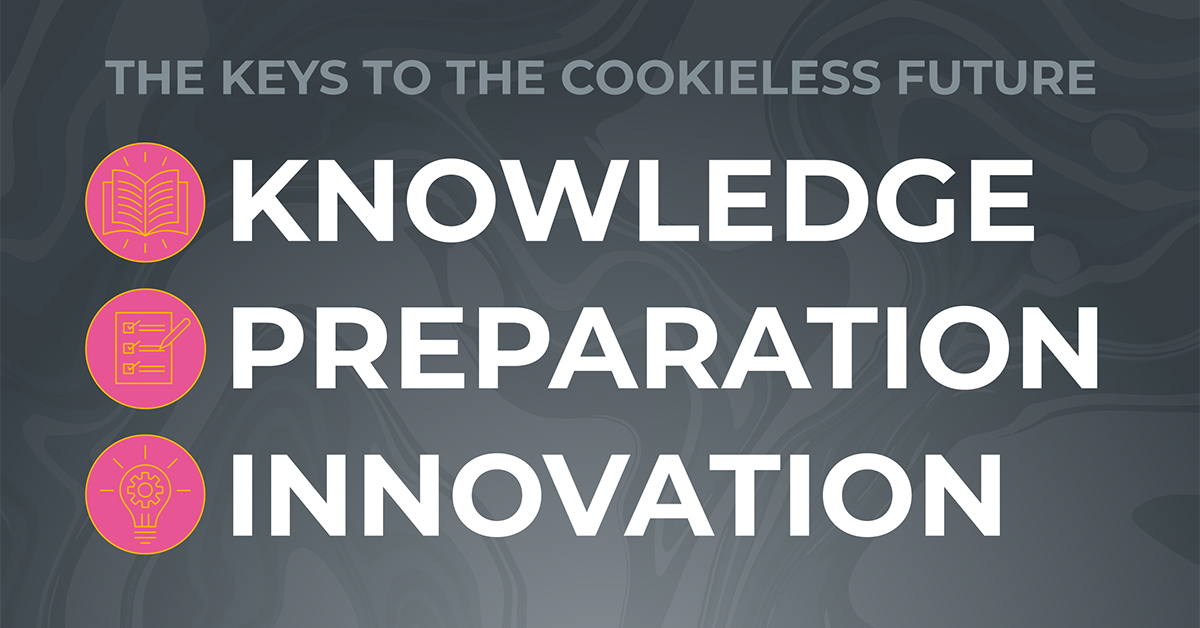The Ever Changing Digital Marketing Landscape
05.03.23 · Greteman Group
You know the saying, the only constant is change. That couldn’t be more true when it comes to digital marketing
Audiences Without Cookies
Cookies have made their way into our internet vocabulary for more than a decade – and not the chocolate chip ones. We’re talking about the cookies that store information about user browsing behavior to improve the online experience.
But privacy comes into question any time user data is collected and stored. Research shows that nearly two thirds of adults say the government should do more to regulate how internet companies handle privacy issues.
At the heart of that discussion are third-party cookies. These are anonymized files of information created when you visit a website that another advertiser or social media site tracks in order to get a wider view of interests. Not to be confused with first-party cookies, which are created by the site you’re on to improve user experience (like saving preferences, remembering passwords, keeping items in your shopping cart, storing payment info, etc). Essentially third-party cookies help provide advertisers with information to be able to provide relevant ads based on your interests – like those cute sandals you have been eyeing for the summer.
Third-party cookies originally were intended to be used for good, but unfortunately bad actors started using them for more nefarious intentions. That, combined with internet users rightfully demanding more privacy, began a pushback against them.
There have already been small steps over the last 6-8 years to phase these cookies out, such as the California Consumer Privacy Act in 2020 and Apple OS14 prompting users to opt-out of tracking. Google Chrome is claiming to begin blocking third party cookies next year, which would be one of the last dominoes to fall.

Now the question becomes, what’s next and how does this affect my marketing efforts?
Marketers need to focus on privacy safe ways to target their audiences. Ad creative and messaging become even more important to ensure you’re reaching and resonating with your audience. First-party data is a must. Customer relationship management (CRM) databases will help lead that charge. Contextual targeting – marketing on sites that offer something relevant to your audience – will be another way to effectively reach your target.
Internet privacy has become more and more important to users. Now, as marketers, we will once again embrace a new change and ways to reach our audience in a relevant way that respects their privacy.
Creative is Key
With the end of third-party cookies across the internet looming soon, the creative concepts delivered during campaigns are more important than ever. Gone are the days where a vague message works because you are also able to layer in specific user targeting.
When targeting capabilities become slim, a wider net must be cast to speak to a broader audience, making the message key to determining if it’s relevant. Consumers spend on average 8 hours a day with digital media, so a clear, concise message is important.
Moving beyond traditional static banner ads to more interactive units, incorporating video, and native tactics encourage more brand awareness and message comprehension. Rich media gives more opportunity to interact with the brand and provides more performance metrics than a static ad does.
Now What?
The key to navigating these changes is knowledge, preparation and innovation. Understanding when and why change comes is the first step in creating a plan to adapt. Pushing back will leave you behind. Roll with it and approach it as a new opportunity with the potential to do something innovative.
Will the absence of third-party cookies make marketing impossible? Definitely not. Will it add a new challenge? You bet. But if you have any experience in this industry, you should already be equipped for this. It’s yet another evolution as digital marketing keeps up with the technological world – anyone remember mobilegeddon?
Make sure you’re collecting all the first-party data you can through detailed website/mobile app behavior and customer information, prioritize your creative and messaging, deeply monitor performance, and you won’t feel a thing.
